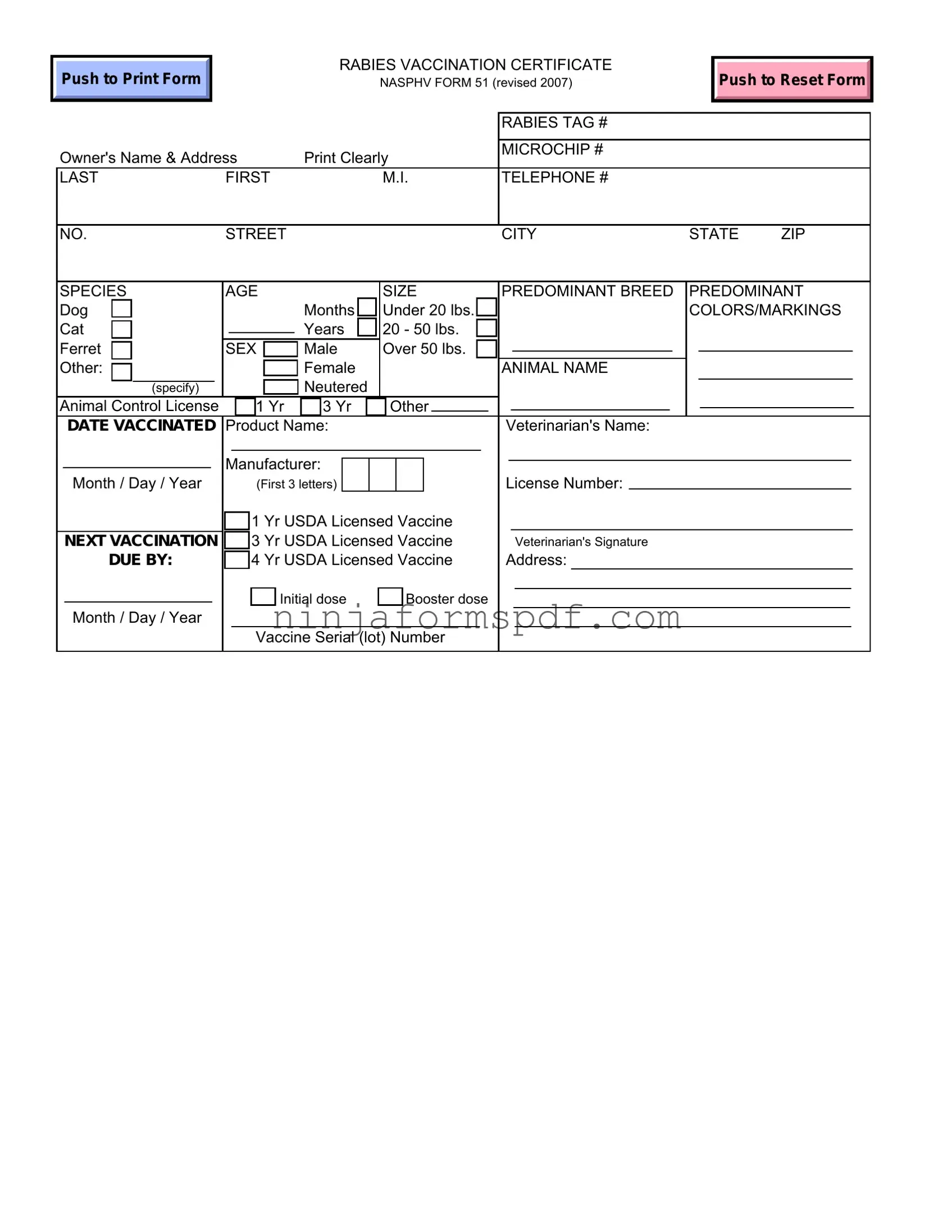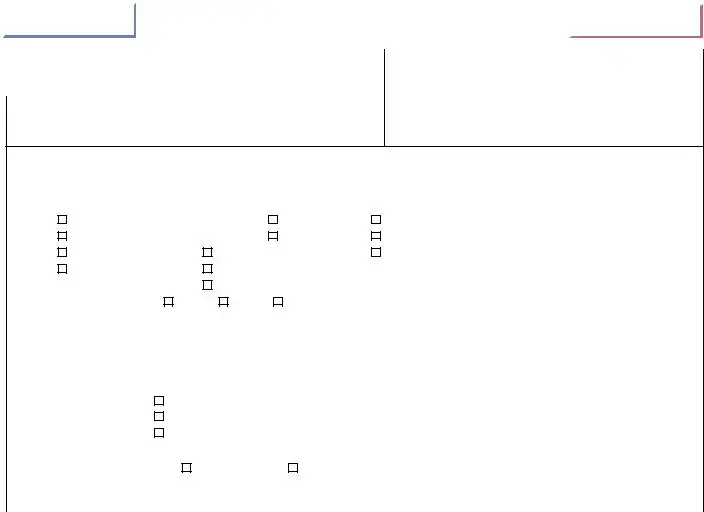Filling out a Rabies Vaccination Certificate correctly is crucial for ensuring the health and safety of pets and the community. However, it's easy to stumble on a few common mistakes. One typical error is not printing clearly. It's vital to fill out the form legibly, as unclear handwriting can lead to misinterpretation of critical information, such as the owner's address or the veterinarian's name.
Another oversight involves the Rabies Tag Number. Frequently, this section is left blank or not filled out correctly. The tag number is essential for tracking the vaccination status of the pet should it become lost or if there's a need to verify its rabies vaccination history.
Incorrectly noting the species, age, and size of the pet can also lead to confusion. These details help in understanding the appropriate care and vaccine dosage for the animal. Especially the differentiation between species like dogs, cats, and ferrets; and specific details like the pet's age and weight, ensure the vaccine's efficacy and safety.
Misclassifying the pet's sex and reproductive status is a further mistake that can occur. Marking a pet as male when it is female, or vice versa, or failing to indicate whether it has been neutered, can have implications for health management and control of the pet population.
Entering the wrong date vaccinated or the next vaccination due date are errors that have significant consequences. These dates determine when the pet is protected from rabies and when it's time to renew the vaccination. Misdates can lead to a lapse in protection.
An error often made revolves around the vaccine information. Some fail to clearly write the product name or manufacturer, or they might choose the wrong vaccine type (1 Yr, 3 Yr, or 4 Yr USDA Licensed Vaccine). This information is crucial for ensuring that the pet receives a legally recognized and effective vaccine.
Another oversight is providing incomplete veterinarian details. The veterinarian's name, license number, and address are essential for verification purposes and to seek additional information if needed. It's also important for ensuring that the vaccination was administered by a qualified professional.
Forgetting to identify the initial dose from a booster dose is a mistake that can affect the scheduling of future vaccinations. This distinction helps pet owners and veterinaries keep track of the vaccination schedule, ensuring pets remain protected.
Last but not least, neglecting to provide detailed contact information, including a current telephone number, can impede necessary communication. Up-to-date contact details are vital for any follow-ups, reminders for future vaccinations, or in the unfortunate event the pet is lost and found.

